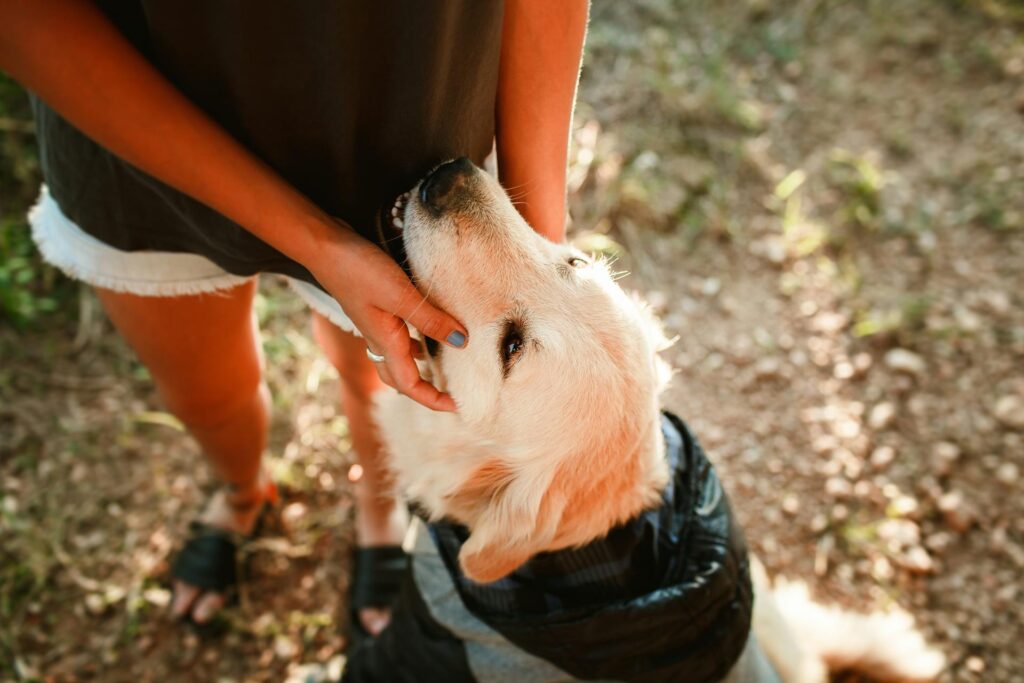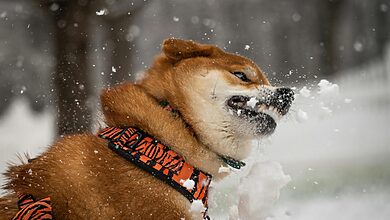Dog Humping Behavior: Causes, Tips and Training Solutions

Dog humping is a common yet often misunderstood behavior. While it can be embarrassing and frustrating for pet owners, humping is a natural canine action that can have multiple causes, from dominance to overexcitement. Understanding the reasons behind dog humping and how to manage it effectively is essential for responsible pet ownership.
This article will explore why dogs hump, the possible triggers, and actionable methods to control and correct this behavior. Whether it’s directed at people, other dogs, or objects, the key to resolving excessive humping lies in proper training, medical evaluation, and behavioral management.
For further information on canine behavior, visit The American Kennel Club (AKC) and The Humane Society.
Table of contents
- Why Do Dogs Hump?
- How to Manage Dog Humping
- Special Considerations for Multi-Dog Households
- Medical Concerns Related to Humping
- Dog Humping
- FAQs: Dog Humping Behavior
- 1. Why do dogs hump?
- 2. Is dog humping always sexual?
- 3. How can I stop my dog from humping?
- 4. What are some common causes of dog humping?
- 5. Is humping a sign of dominance or aggression?
- 6. How can I train my dog to stop humping?
- 7. Should I punish my dog for humping?
- 8. When should I consult a veterinarian or dog behaviorist?
- 9. How can I prevent my dog from humping?
- 10. Can spaying or neutering help reduce humping behavior?
Why Do Dogs Hump?
1. Sexual Behavior
While neutered or spayed dogs may still hump, intact dogs (those not neutered or spayed) are more likely to display humping as part of their sexual behavior. This behavior can occur in both male and female dogs and may be directed at other dogs, objects, or people.
For guidance on spaying and neutering, visit ASPCA and PetMD.
2. Excitement or Overstimulation
Humping is not always linked to sexual activity. Some dogs hump when they get excited, such as during playtime or when meeting new people or animals. This type of humping is often due to excessive energy and lack of impulse control.
3. Social and Dominance Behavior
Some dogs use humping as a way to establish dominance over other dogs or animals. It is a form of social assertion, similar to mounting behavior seen in pack animals.
4. Stress or Anxiety
Humping can be a coping mechanism for dogs experiencing anxiety or stress. When a dog is anxious, they may resort to repetitive behaviors like licking, chewing, or humping to self-soothe.
For anxiety management, check out Fear Free Pets and Cesar’s Way.
5. Learned Habit or Attention-Seeking Behavior
If humping has been reinforced—whether through laughter, petting, or attention—the dog may continue the behavior. Dogs quickly learn that certain actions elicit responses from their owners, making humping a learned habit.
6. Medical Issues
Excessive humping may indicate underlying health concerns such as urinary tract infections (UTIs), skin allergies, or priapism (persistent erections). If a dog suddenly starts humping more frequently, a veterinary visit is recommended.
For veterinary resources, visit VetStreet and American Veterinary Medical Association.

How to Manage Dog Humping
1. Identify the Trigger
Observing when and where your dog humps can help determine the cause. Is it during play? Around specific people or pets? Identifying the trigger is the first step in addressing the behavior.
2. Redirect Behavior with Commands
Teaching basic commands such as “sit,” “stay,” or “leave it” can help redirect your dog’s focus away from humping. Training should be consistent and reinforced with positive rewards like treats and praise.
Check out The AKC Training Library for training techniques.
3. Provide Physical and Mental Stimulation
Dogs with excess energy are more likely to hump. Regular exercise, interactive toys, and puzzle games can help burn off excess energy and reduce humping.
Explore mental stimulation toys at Chewy and Kong.
4. Avoid Reinforcing the Behavior
If your dog humps to get attention, avoid reacting in a way that might encourage it. Instead of yelling or pushing them away, calmly redirect their focus to another activity.
5. Use Time-Outs
If your dog persistently humps despite redirection, a short time-out can be an effective way to discourage the behavior. Remove them from the situation for a few minutes and reintroduce them once they have calmed down.
6. Consider Neutering or Spaying
If your dog’s humping is sexually motivated, spaying or neutering can significantly reduce the behavior. While not a guaranteed solution, it helps lower hormone-driven actions.
Learn about neutering benefits from SpayUSA.
7. Address Anxiety and Stress
If humping is anxiety-related, reducing stressors in your dog’s environment and introducing calming techniques can help. Some useful methods include:
- Using calming supplements
- Playing soothing music
- Providing a secure, comfortable resting area
For anxiety relief products, visit Thundershirt and Adaptil.
8. Seek Professional Training
If the behavior persists, consulting a professional dog trainer or behaviorist can be beneficial. They can develop a customized training plan tailored to your dog’s needs.
Find certified trainers at The International Association of Canine Professionals and The Certification Council for Professional Dog Trainers.
Special Considerations for Multi-Dog Households
If you have multiple dogs, humping can sometimes escalate into conflicts. Here’s how to manage it effectively:
- Monitor Play Behavior: Interrupt rough play if humping becomes excessive.
- Ensure Each Dog Has Personal Space: Provide separate resting and feeding areas.
- Reinforce Individual Training: Work with each dog separately to teach proper behavior.
Medical Concerns Related to Humping
While humping is usually behavioral, medical issues should not be ruled out. Some conditions that may cause excessive humping include:
- Urinary Tract Infections (UTIs) – Frequent licking and humping can indicate discomfort.
- Skin Allergies – Dogs with itchy skin may develop humping as a response.
- Hormonal Imbalances – Conditions like hypothyroidism can influence behavior.
If you suspect a medical issue, consult your vet or visit Vet Help Direct for expert advice.
Dog Humping
Dog humping is a normal behavior, but excessive or inappropriate humping should be managed with training, exercise, and behavioral correction techniques. Identifying the root cause—whether excitement, stress, or dominance—is crucial in effectively managing the behavior. When in doubt, seeking professional guidance or veterinary advice can provide further support.
For more pet behavior resources, visit PetMD and The Humane Society.
FAQs: Dog Humping Behavior
1. Why do dogs hump?
Dog humping can arise from various motivations. It can be a playful behavior, particularly common in younger dogs. Hormonal influences, especially in intact males and females, can also play a significant role. In some cases, stress, anxiety, or even attention-seeking behavior can manifest as humping. Additionally, underlying medical conditions may contribute to excessive humping.
2. Is dog humping always sexual?
While sexual motivation can be a factor, especially in intact animals, humping is often a more complex behavior with diverse underlying causes. It’s not always a strictly sexual act and can be a way for dogs to express excitement, frustration, or even dominance.
3. How can I stop my dog from humping?
Addressing dog humping involves a multi-pronged approach. Distraction and redirection are key. When your dog starts to hump, immediately divert their attention with a toy, a game of fetch, or a walk. Management is crucial – prevent opportunities for humping by separating dogs during playtime, supervising interactions, and removing potential triggers. Training your dog alternative behaviors, such as sit, stay, and come, can also be beneficial. In some cases, consulting with a certified dog trainer or behaviorist can provide personalized guidance and training plans.
4. What are some common causes of dog humping?
Common causes of dog humping include:
- Excitement/Play: A common occurrence, especially in younger dogs.
- Hormonal Influences: Intact males and females may exhibit increased humping, particularly during periods of hormonal changes.
- Stress/Anxiety: Anxiety or frustration can manifest as humping behavior.
- Attention-Seeking: Dogs may resort to humping to gain attention, even if it’s negative attention.
- Medical Conditions: In some cases, underlying medical issues like hormonal imbalances or neurological problems can contribute to excessive humping.
5. Is humping a sign of dominance or aggression?
While humping can sometimes be misconstrued as dominance, it’s rarely a true sign of aggression. It’s more often a displacement behavior or a way for the dog to express excitement or frustration.
6. How can I train my dog to stop humping?
Positive reinforcement is key. Reward your dog for desired behaviors (e.g., sitting, lying down) and ignore or redirect the humping. Management strategies, such as preventing opportunities for humping and supervising interactions, are essential. Consulting with a certified dog trainer or behaviorist can provide personalized training plans and address underlying issues.
7. Should I punish my dog for humping?
Punishing your dog for humping is not recommended. Punishment can create fear and anxiety, worsen the behavior, and damage your bond.
8. When should I consult a veterinarian or dog behaviorist?
Consult a veterinarian to rule out any underlying medical conditions. Seek professional guidance from a certified dog trainer or behaviorist if:
- The behavior is frequent and severe.
- You’re struggling to manage the behavior on your own.
- You suspect underlying anxiety or aggression.
9. How can I prevent my dog from humping?
Early and appropriate socialization and training are crucial. Provide adequate exercise and mental stimulation. Manage your dog’s environment to minimize triggers. Consider spaying or neutering your dog, as this can reduce hormone-related humping.
10. Can spaying or neutering help reduce humping behavior?
Spaying or neutering can significantly reduce hormone-related humping, especially in intact males and females. However, it may not eliminate the behavior entirely.








